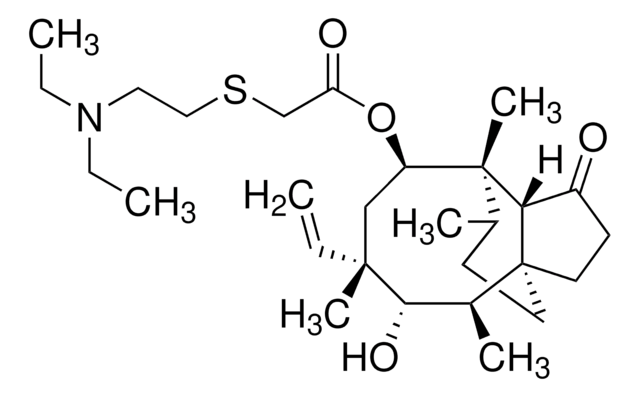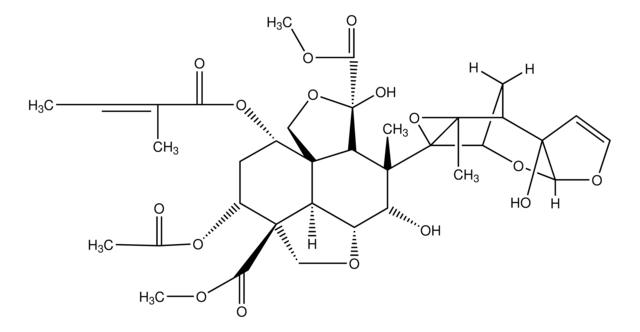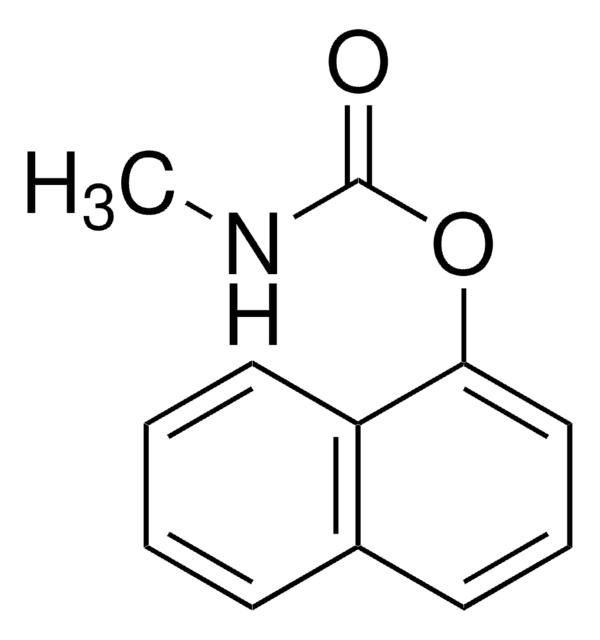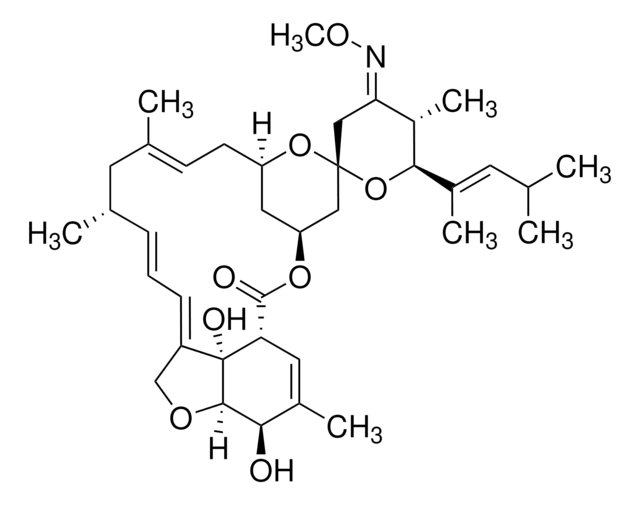Key Documents
32999
Aminoethoxyvinyl glycine hydrochloride
PESTANAL®, analytical standard
Synonim(y):
(S)-trans-2-Amino-4-(2-aminoethoxy)-3-butenoic acid hydrochloride, L-α-(2-Aminoethoxyvinyl)glycine hydrochloride, AVG-HCl
About This Item
Polecane produkty
klasa czystości
analytical standard
Poziom jakości
linia produktu
PESTANAL®
okres trwałości
limited shelf life, expiry date on the label
metody
HPLC: suitable
gas chromatography (GC): suitable
Zastosowanie
agriculture
environmental
format
neat
temp. przechowywania
−20°C
ciąg SMILES
Cl[H].NCCO\C=C\[C@H](N)C(O)=O
InChI
1S/C6H12N2O3.ClH/c7-2-4-11-3-1-5(8)6(9)10;/h1,3,5H,2,4,7-8H2,(H,9,10);1H/b3-1+;/t5-;/m0./s1
Klucz InChI
ZDCPLYVEFATMJF-BTIOQYSDSA-N
Szukasz podobnych produktów? Odwiedź Przewodnik dotyczący porównywania produktów
Zastosowanie
Informacje prawne
Oświadczenie o zrzeczeniu się odpowiedzialności
Hasło ostrzegawcze
Danger
Zwroty wskazujące rodzaj zagrożenia
Zwroty wskazujące środki ostrożności
Klasyfikacja zagrożeń
Eye Dam. 1 - Skin Irrit. 2 - STOT SE 3
Organy docelowe
Respiratory system
Kod klasy składowania
11 - Combustible Solids
Klasa zagrożenia wodnego (WGK)
WGK 2
Temperatura zapłonu (°F)
Not applicable
Temperatura zapłonu (°C)
Not applicable
Środki ochrony indywidualnej
dust mask type N95 (US), Eyeshields, Gloves
Wybierz jedną z najnowszych wersji:
Masz już ten produkt?
Dokumenty związane z niedawno zakupionymi produktami zostały zamieszczone w Bibliotece dokumentów.
Klienci oglądali również te produkty
Nasz zespół naukowców ma doświadczenie we wszystkich obszarach badań, w tym w naukach przyrodniczych, materiałoznawstwie, syntezie chemicznej, chromatografii, analityce i wielu innych dziedzinach.
Skontaktuj się z zespołem ds. pomocy technicznej











